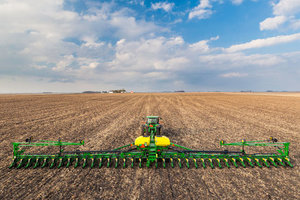From Machinefinder News

The USDA's early release of commodity tables provides a sneak peak of what's expected in years ahead.
The U.S. Department of Agriculture released a series of tables from its upcoming “USDA Agricultural Projections to 2025” report on Dec. 11. The information included in the tables addresses long-term supply, price projections and use up to 2025 for major crops and livestock items. Furthermore, the data incorporates supporting U.S. and international macroeconomic assumptions.
For 2016-17, corn is projected to reach 90.5 million acres planted, while beans are expected to total 82 million acres planted. Wheat is predicted to reach 53 million acres planted within this time span.
As a starting point, the projections use the short-term predictions from the November 2015 World Agricultural Supply and Demand Estimates report. The full report will be released by the USDA in February 2016, and it will include projections for the global commodity trade.
The USDA’s projections are based on a departmental consensus on a long-term scenario for the agricultural industry over the next 10 years. The predictions are based on macroeconomic conditions, policy, weather and international developments. They are also made on the assumption that there are no domestic or international shocks to the global agricultural market.
The early-release tables are available to the public in MS Excel format, and they have also been posted to the Office of the Chief Economist’s website at www.usda.gov/oce. The most recent available report on projections through 2024 was released in February 2015.
Source:machinefinder.edu